Conference Review – posted 14 November 2006
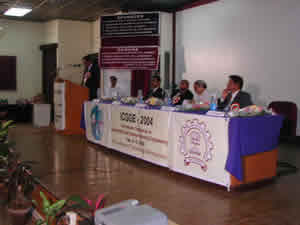 |
| Geosynthetics in India – Present and Future: Opening Ceremonies |
Approximately 90 people attended the half-day geosynthetics introductory course at the International Seminar on "Geosynthetics in India – Present and Future" on 8 November 2006 at the Central Board of Irrigation and Power (CBIP) in New Delhi, India.
 |
| Prof. G. V. Rao (seated) and Mr G. N. Mathur (speaking) |
Mr G. N. Mathur, Secretary of CBIP, welcomed participants to the course chaired by Prof. G. V. Rao.
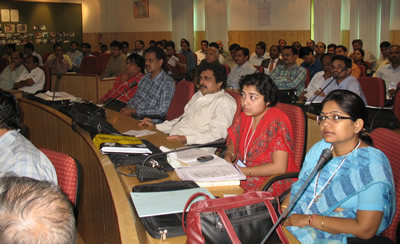 |
| Course Attendees |
Topics and speakers were:
- Geosynthetics: Types and Manufacturing Methods (G. V. Rao)
- Reinforcement Applications (G. V. Rao)
- Pavement Applications (S. Mhaiskar)
- Landfill Applications (M. Venkatamaran)
- Erosion Control Applications – Coir (U. S. Sharma)
- Erosion Control Applications – Jute (T. Sanyal)
- Testing and Evaluation of Geotextiles and Geogrids (A. R. Katti)
- Testing and Evaluation of Geomembranes (Ian D. Peggs)
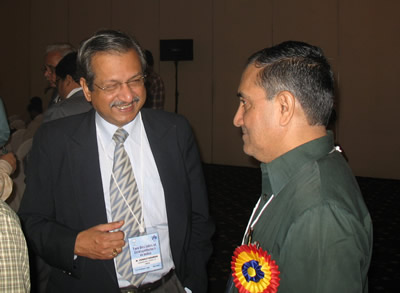 |
| M. Venkatamaran and S. K. Das |
An additional 60 people attended the following two-day conference celebrating 20 Years of Geosynthetics in India at the Le Meridien Hotel in New Delhi. Invited lectures by out-of-India experts were given by F. Tatsuoka, Bernard Miles, Sam Allen, Ian D. Peggs, Alberto Scuero, and Chris Jenner.
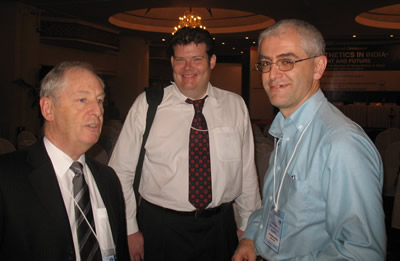 |
| Invited Lecturer Chris Jenner (UK) with Dave Woods (Singapore) and Richard Austin (Hong Kong) |
An Honored Guest at the seminar was Mr. M. Gopalakrishnan, Secretary General of the International Commission on Irrigation and Drainage (ICID).
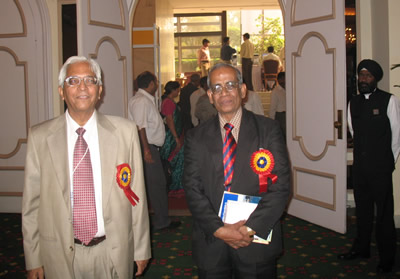 |
| G. N. Mathur (Secretary, CBIP) and M. Gopalakrishnan (Secretary General, ICID) |
A commemorative volume containing all invited papers has been published together with a proceedings of the remaining papers on reinforced soil structures, testing and evaluation, environmental applications and barriers, roads and railways, and erosion control.
 |
 |
| Aruna Lal (India) | Alberto Scuero (Switzerland) |
Most Indian presenters felt that while the use of geosynthetics is increasing significantly, it is not increasing at the rate it should be for the size and needs of the country. For instance, while there is a commitment for major road construction programs, the geosynthetic component will be nowhere near as high as it should be. Much of this is related to the need for a testing laboratory and for standard test programs and protocols for each geosynthetic component of critical systems.
The need for an Indian Geosynthetics Institute was eloquently expressed by Prof. Rao. One of the conference attendees stated that design engineers request extensive test data on the geosynthetic components of a project, but completely forget about equivalent information on the associated soils. And, after having obtained the geosynthetic data, it is not properly applied. These are the typical concerns of a developing industry, an industry that is set for explosive growth, but growth that must be controlled to some degree lest the alternative of many failures causes it to self-destruct. A great deal of practical technology transfer work is required.
The next event in India is a "Workshop on Geosynthetic Reinforced Wall Structures" on 13 December in Chennai.











